- A device
- Internet
1
Efficient Design
The aim of this technical skills lesson is to get you thinking about what plants are the most suitable and therefore sustainable for your landscape/garden design, as well as how to design an eco-friendly garden overall. By the end of this lesson, you should have an increased understanding of designing for the environment in mind.
You Need
Think About
Lesson Content
When designing a garden, it is essential to look at landscapes and cities as systems rather than objects. In these systems, you want to look at the functionality of the plants and processes you implement, with nature in mind, rather than solely looking at the aesthetics, which should come second for a sustainable design. In this lesson, we will again refer to the research of Johann Bernhardt and multiple others in their book ‘A DEEPER SHADE OF GREEN’, as well as Elizabeth Wilhide’s ‘ECO’.
In ECO, Wilhide discusses the importance of working with nature when designing a garden for not only people, but for the environment. Designing for the environment in mind can provide its own sense of joy for the people who step into a more naturally functional space.
This means:
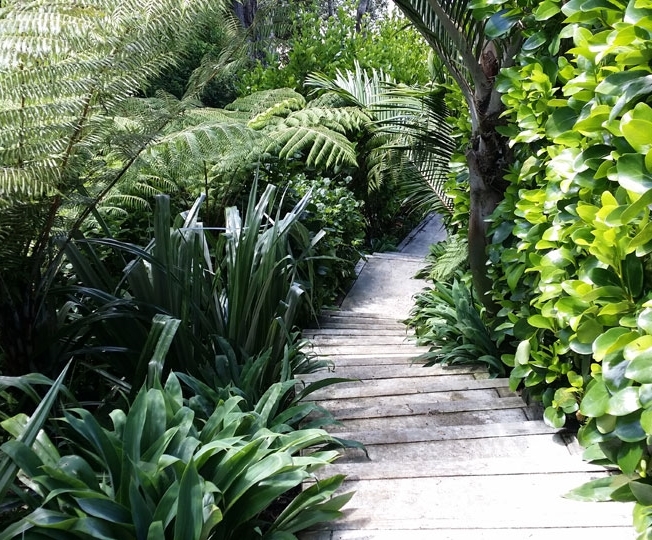
A natural garden replicating a self-sustaining ecosystem by Second Nature
Adding to these ideas, here is a summary of Elizabeth Wilhide’s eco-friendly gardening strategies:
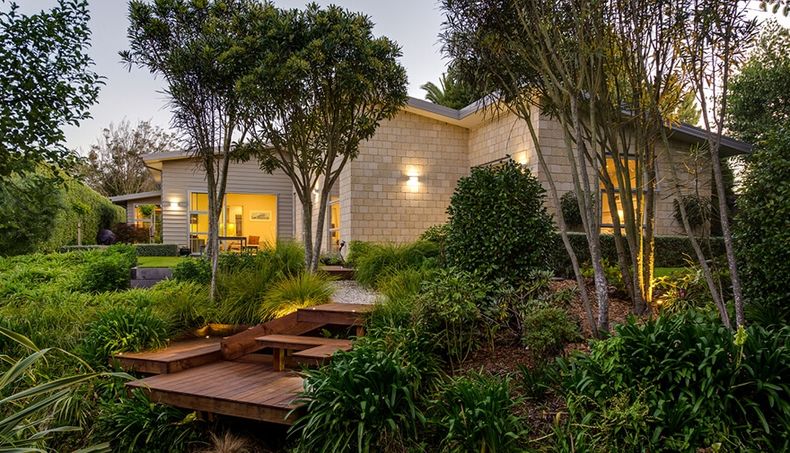
A well mulched garden is covered with moisture tolerant plants by Foley Group
From ‘A DEEPER SHADE OF GREEN’, Blake Cameron discusses xeriscape water saving strategies:
.
As explored in lesson 1, there is the great opportunity for rainwater collection for garden irrigation. For example, water could be caught on a roof of an existing building or shelter located within your landscape design, where it could be stored in a tank and dispersed by a drip-type irrigation system to water the garden where necessary, or for a drinking water source after going through a filtration, purification, and pump system (see lesson 1 for more information).
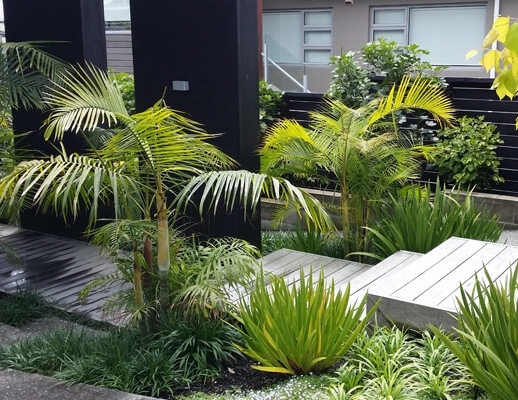
A xeriscape landscape design by Second Nature
It is also key to understand that drainage and stormwater management are of particular concern. This is because runoff is the most environmentally damaging effect of urban development, with erosion and pollution of waterways and harbours at severe levels. This is where plant and material selection (see lesson 2 for more on material considerations) are vital.
You need to think about:
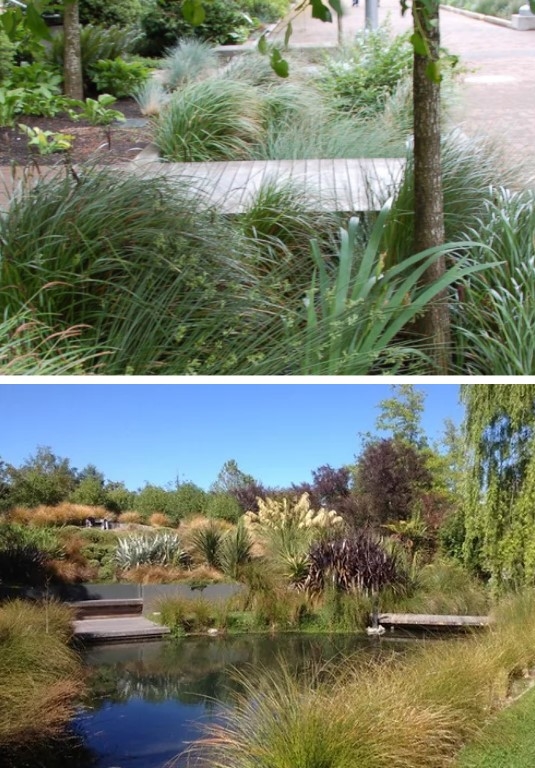
Implementing natural systems of ponds and plants can help catch and purify runoff water
As discussed above, when choosing plants, you need to have your site’s conditions in mind. Ideally, you want to choose plants native to your country, not exotic plants that come from halfway across the world, although as beautiful they may be. You should think about how sustainable they are, including their care requirements and water consumption, and where they would work best. Further resources can be found below in the ‘SUPERSIZE ME’ section.
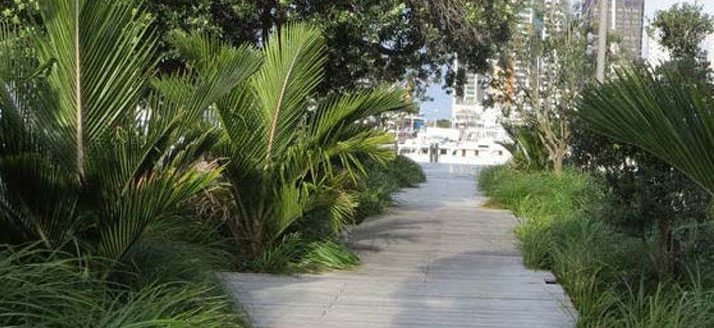
Tree pits in Auckland
Here are a few native New Zealand species that are quite resistant to dry conditions according to (“NZ Native Plants & Trees - Native Flowers, Shrubs & Plants» archipro.co.nz,” 2020):
1. Astelia Chathamica
Astelia Chathamica has broad spiky silvery green leaves which droop at their tips, and orange berries from Feb-June which attract birds.
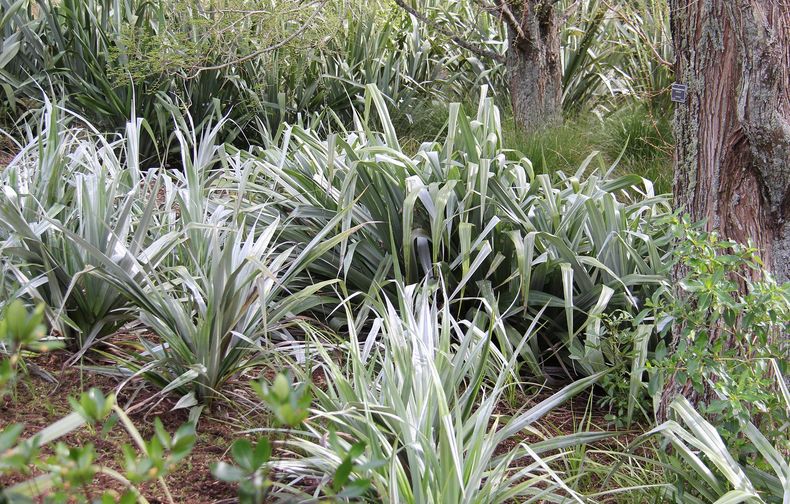
Astelia Chathamica
2. Carex Testacea
Carex Testacea is a NZ native orange and green sedge grass. It is densely tufted with fine narrow arching leaves and lasts all year round. It grows to approximately 60cm x 60xm when mature.
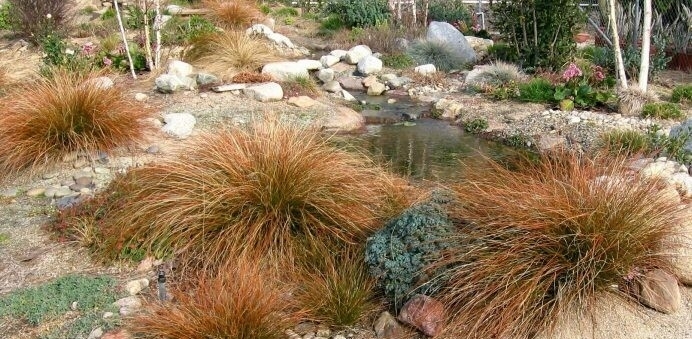
Carex Testacea
3. Carex Comans Bronze
Carex Comans Bronze is another small NZ native sedge grass. It grows up to 30-40cm high, with reddish brown foliage. The small size makes it perfect for smaller landscapes, borders or edges.
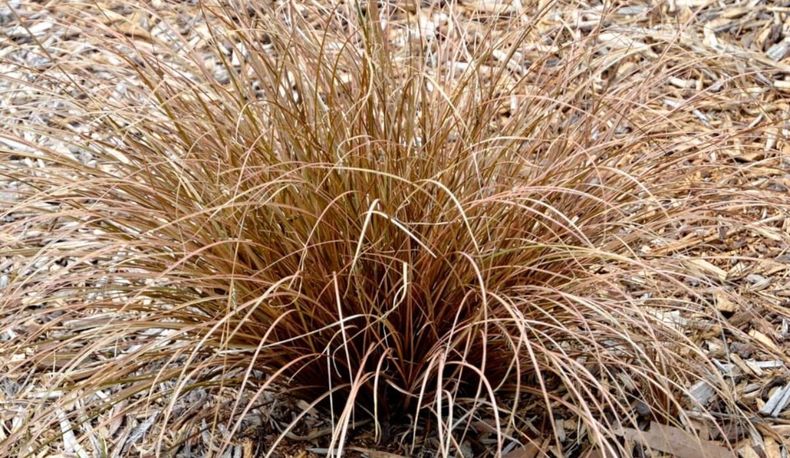
Carex Comans Bronze
4. Chionochloa Flavicans
Chionochloa Flavicans have flowing green foliage and weeping flower-heads in summer. The arching flower stems are up to 1.5m long and carry drooping plumes of a silky pale green. It grows to approximately 1.5m x 1.5m when mature.
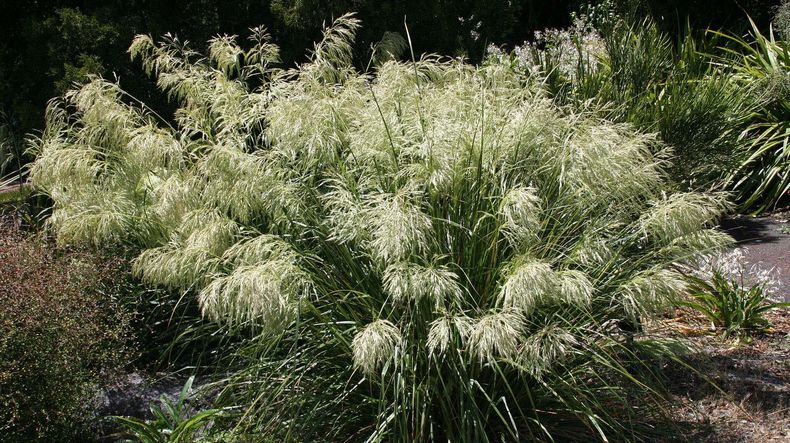
Chionochloa Flavicans
5. Corokia Geenty’s Green
Corokia Geenty’s Green is a shrub covered in early summer with star shaped yellow flowers followed by orange berries in late summer. Corokia is great for a formal dense hedge when clipped, where it can grow to 2m but can be easily trimmed to 75cm to 1m.
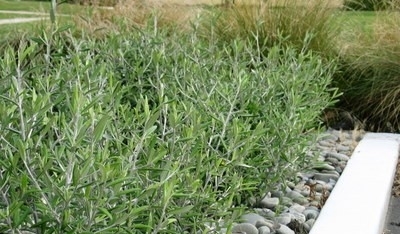
Corokia Geenty’s Green
Here are a few native New Zealand species that are quite resistant to wet conditions according to (“NZ Native Plants & Trees - Native Flowers, Shrubs & Plants» archipro.co.nz,” 2020):
1. Coprosma Virescens
Coprosma Virescens is an upright shrub or small tree with thin, pale-green leaves on divaricating stems. It is good for riparian or reveg projects, or as an informal hedge. It grows to approximately 3m tall x 1m wide when mature.
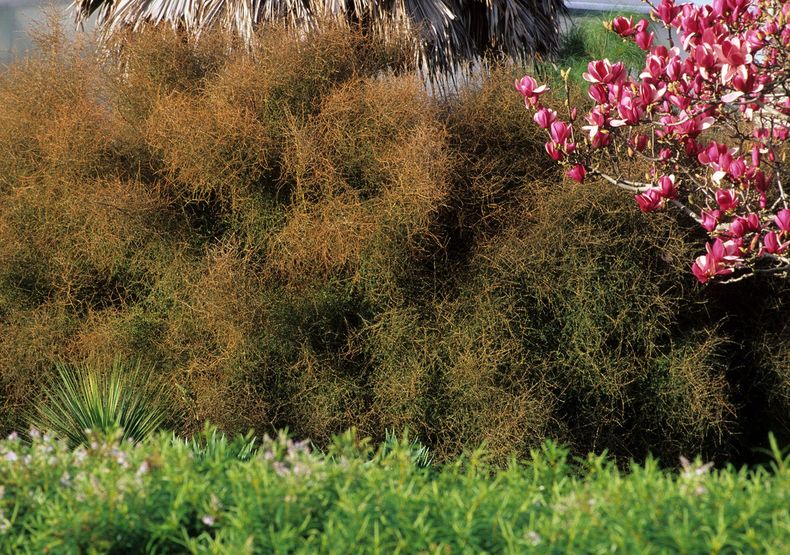
Coprosma Virescens
2. Carex Frosted Curls
Carex Frosted Curls is a hybrid variety of the NZ native sedge. It has pale green grasslike leaves that curl towards the ground, softening any landscape. It makes a great border, or they can be grouped together for ground coverage. It grows to approximately 40cm x 40cm.
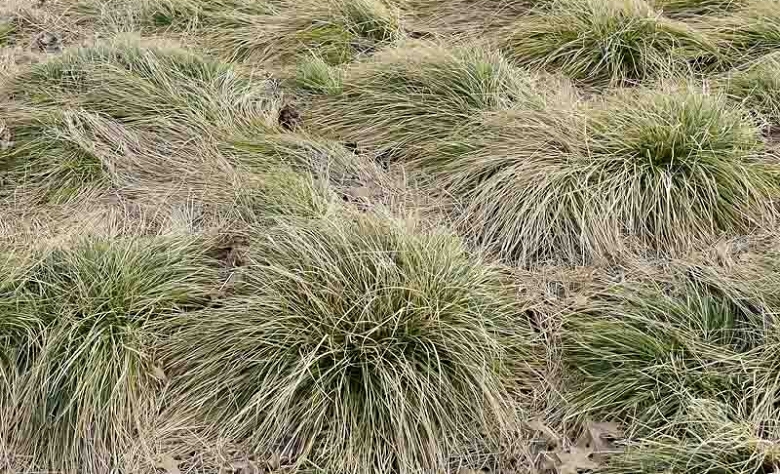
Carex Frosted Curls
3. Pseudopanax
The Pseudopanax Arboreus is a small tree that has deep shiny green leaves, and tiny flowers in winter followed by small berries that attract birds. It grows to approximately 6m high by 3.5m wide when mature.
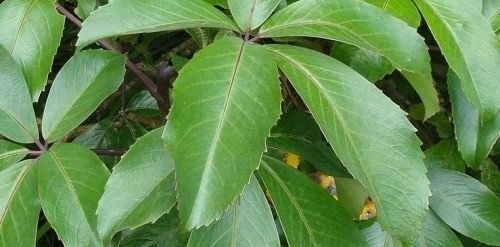
Pseudopanax
4. Phormium Evening Glow - Flax
Phormium Evening Glow is a flax selected cultivar. It was chosen for its bold, variegated burgundy red foliage, which intensifies in winter. It looks great by itself or in mass plantings. It grows to approximately 1m x 1m when mature.
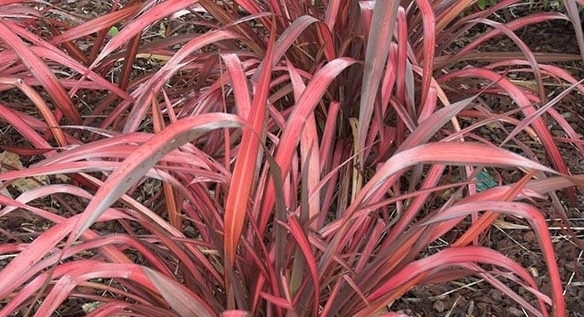
Phormium Evening Glow - Flax
5. Phormium Jack Spratt - Flax
Phormium Jack Spratt is a dwarf flax with narrow upright bronze-red leaves. It looks particularly good when group planted. It is great in containers and rock gardens. It grows to approximately 30cm x 30cm when mature.
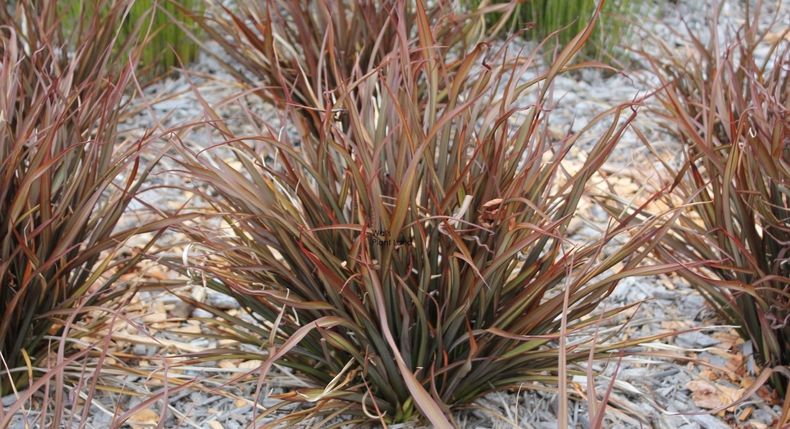
Phormium Jack Spratt - Flax
Citations
NZ Native Plants & Trees - Native Flowers, Shrubs & Plants» archipro.co.nz. (2020). Retrieved February 11, 2022, from Archipro.co.nz website: NZ Native Plants & Trees - Native Flowers, Shrubs & Plants | ArchiPro